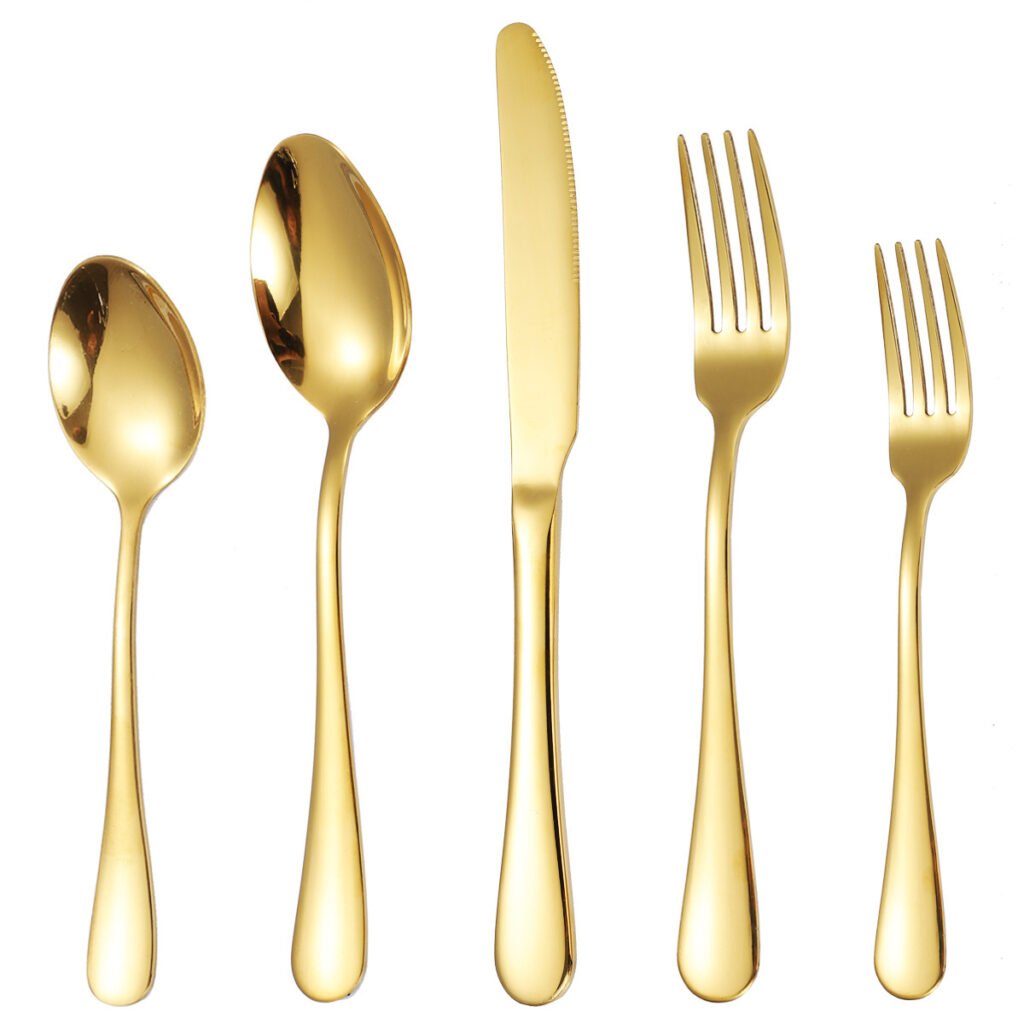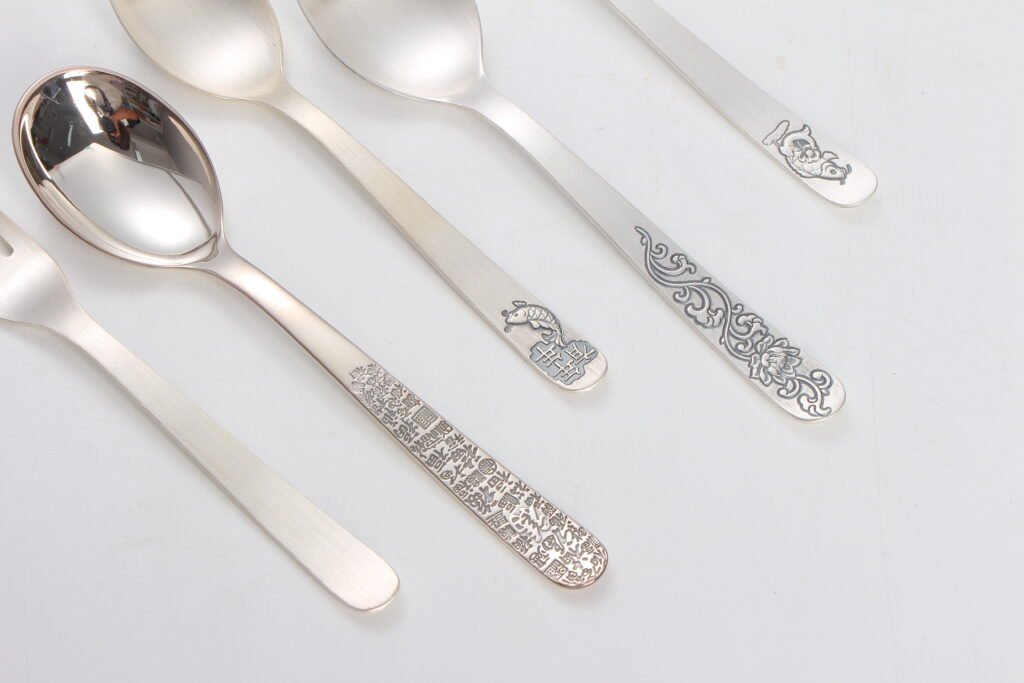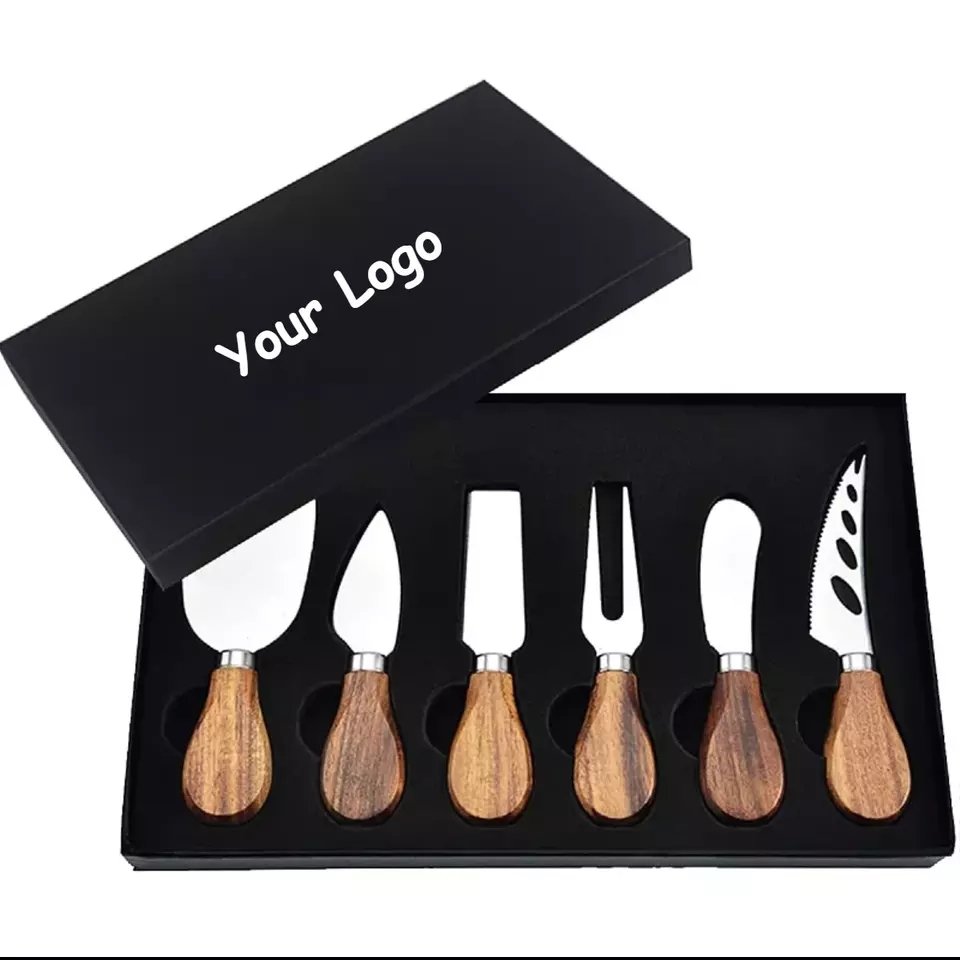If you’re in the market for cutlery, you’ve probably heard about the debate between silver and stainless steel. But what makes one better than the other? Let’s break it down.
The highest quality flatware often comes down to the grade of stainless steel used. Silverware can be made of either silver or stainless steel, but the latter is more durable, affordable, and practical for daily use.
While both silver and stainless steel have their unique benefits, understanding the differences can help you make the right choice for your dining needs. So, let’s dive deeper into the distinctions.
Table of Contents
What is the highest quality stainless steel flatware?
Are you wondering what makes a stainless steel flatware set stand out? It’s all about the grade and composition.
The highest quality stainless steel flatware is typically made of 18/10 stainless steel, which is durable, resistant to rust, and holds a shiny finish for years.
When selecting stainless steel flatware, the first thing to look for is the grade of steel. The numbers, such as 18/10, 18/8, or 18/0, refer to the percentage of chromium and nickel in the alloy. The first number (18) stands for chromium, which enhances the steel’s resistance to rust and corrosion. The second number (10) refers to nickel, which improves the strength and resistance to tarnishing.
Why is 18/10 the best?
18/10 stainless steel is considered the highest grade because of its balance between durability and aesthetic quality. It has 18% chromium for rust resistance and 10% nickel, which gives the flatware a shiny, reflective surface and makes it resistant to staining.
Comparing 18/10, 18/8, and 18/0
| Grade | Chromium (%) | Nickel (%) | Characteristics |
|---|---|---|---|
| 18/10 | 18 | 10 | Excellent rust and stain resistance, high shine |
| 18/8 | 18 | 8 | Good resistance, but slightly less durable |
| 18/0 | 18 | 0 | More affordable, but lacks the durability and resistance of higher grades |
In summary, 18/10 is your best bet for high-quality, durable, and long-lasting stainless steel flatware.

Is silver or stainless steel better for silverware?
Is it time to choose between silver and stainless steel silverware? Let’s explore the pros and cons of each to help you decide.
Stainless steel is often better for silverware due to its affordability, durability, and resistance to rust, making it ideal for everyday use. Silver, on the other hand, is more expensive and requires more maintenance.
When comparing silver and stainless steel, several factors come into play: cost, maintenance, durability, and aesthetics.
Durability: Stainless Steel Wins
Stainless steel is far more durable than silver. It is resistant to rust, corrosion, and tarnishing, which makes it a practical option for daily use. Silver, while beautiful, tarnishes over time and requires regular polishing to maintain its appearance.
Cost: Silver is More Expensive
Silverware is often much more expensive due to the value of the metal itself. A solid silver set will cost a premium, whereas stainless steel offers a budget-friendly alternative that still looks great and lasts long.
Aesthetics: Silver for Special Occasions
If you’re looking for something to impress your guests at special occasions, silverware provides a luxurious feel. However, for everyday use, stainless steel provides a good balance between practicality and style.
Is real silverware worth money?
Is your silverware collection an investment? Here’s what you need to know about the value of real silverware.
Real silverware can be worth money, but its value depends on factors like the purity of the silver, the brand, and its condition. It’s more of an investment in quality than practicality.
Real silverware, also known as sterling silver, is made from 92.5% pure silver and often carries significant value due to its quality and craftsmanship. Many vintage silverware pieces, especially those from renowned manufacturers, can fetch a high price at auctions or as collectibles.
How to Determine Value
Several factors determine the value of real silverware:
1. Purity: Sterling silver is made from 92.5% pure silver, which is often stamped with a “925” mark.
2. Brand: Silverware made by renowned brands or designers is more likely to be worth money.
3. Condition: Well-maintained silverware with minimal tarnishing or damage is more valuable.
4. Age: Antique silverware can be quite valuable, especially if it is rare or in high demand.
When is Silverware Worth Investing?
Investing in real silverware might be worth it if you’re purchasing high-quality items that can serve both as functional flatware and as an asset that can appreciate over time. However, for everyday use, it’s more practical to go for stainless steel.

What's the difference between silverware and flatware?
Are you confused about the terms “silverware” and “flatware”? Let’s clear up the difference once and for all.
Silverware refers to utensils made of silver, while flatware generally refers to any eating utensils, including those made of stainless steel, that are flat in shape.
The terms “silverware” and “flatware” are often used interchangeably, but there are subtle differences based on materials and uses.
Silverware vs Flatware
– Silverware: Traditionally refers to utensils made from silver or sterling silver, including forks, knives, spoons, and serving pieces.
– Flatware: A more general term that refers to utensils used at the table, typically forks, knives, and spoons, regardless of material. Flatware includes items made from stainless steel, plastic, or silver.
Why It Matters
Understanding the difference is important because it can affect your purchasing decisions. Silverware is more expensive and requires maintenance, while flatware is generally affordable and easy to care for.
Why do they call silverware flatware?
Have you ever wondered why flatware is called “silverware,” even if it’s not made of silver? Let’s explore the origins of the term.
The term “flatware” refers to utensils that are flat in design, like knives, forks, and spoons. The term “silverware” has stuck, even for non-silver items, due to historical associations with silver cutlery.
The term “flatware” is derived from the flat shape of the eating utensils. Historically, silver was the preferred material for these utensils, and as silver became more common in high society, the term “silverware” stuck even as stainless steel and other materials took over.
Historical Origins
In the 18th century, silver was considered a symbol of wealth and status. Silver cutlery was the standard in many homes, especially among the aristocracy. Over time, even when stainless steel became the more practical option, the term “silverware” remained in use.
The Evolution of Terminology
The transition from silver to stainless steel in everyday homes led to the use of the term “flatware” to describe all types of utensils. However, the name “silverware” persists, likely due to tradition and the continued association with luxury.
How can you tell real silverware?
Not all silverware is created equal. Wondering how to spot the real deal? Here’s your guide.
To identify real silverware, look for the “925” stamp, which indicates it’s made of 92.5% sterling silver. You can also test its weight and color for authenticity.
Real silverware, or sterling silver, can be identified through various methods. Here are the main ways to confirm authenticity:
The “925” Stamp
Sterling silver is legally required to contain at least 92.5% pure silver. Most real silverware is stamped with a “925” mark to indicate its purity. If you can’t find this mark, it may be silver-plated or made from another material.
Weight and Color
Sterling silver is denser and heavier than stainless steel. If you hold a piece of flatware and it feels light, it might not be real silver. Additionally, real silver has a distinct, warm hue compared to the cooler tone of stainless steel.
Acid Testing
If you’re still unsure, an acid test can be performed. However, this method is best done by professionals, as it involves applying a small amount of acid to the silver surface.





